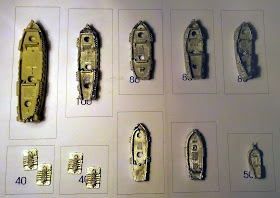
A new version of Nic Wright's
Irregular Wars: Conflict at the World's End has just been published.
Full details of where to get it are on Nic's blog.
I must declare an interest here as my friend Ian and I were amongst the playtesters. While the latter no doubt helped to tighten up the new version, the concept and innovations are entirely down to the author's visionary imagination.
Nic has enhanced Version 2.0 with some new mechanics including an important 'wavering' state, an expanded set of chance cards that add period flavour and high drama, and a straightforward campaign system to provide context to tabletop battles. There are also exciting new lists including Mapuche and Berbers (which I'm planning to use for Barbary Pirates), and Rajput and Vijayanagara.
Obviously I have an interest in 16-17C warfare, these are clever rules, and they give an exciting and enjoyable game.
Irregular Wars requires only a modest investment in figures, a small playing area and can be completed in about 1.5 hours in my experience, though the author says 1 hour!
I'm still painting my colonial Portuguese and Dutch armies, but my English/Irish/Spanish armies are awaiting the release of Khurasan's English and Spanish figures which are exceptionally promising but are taking ages to appear.




